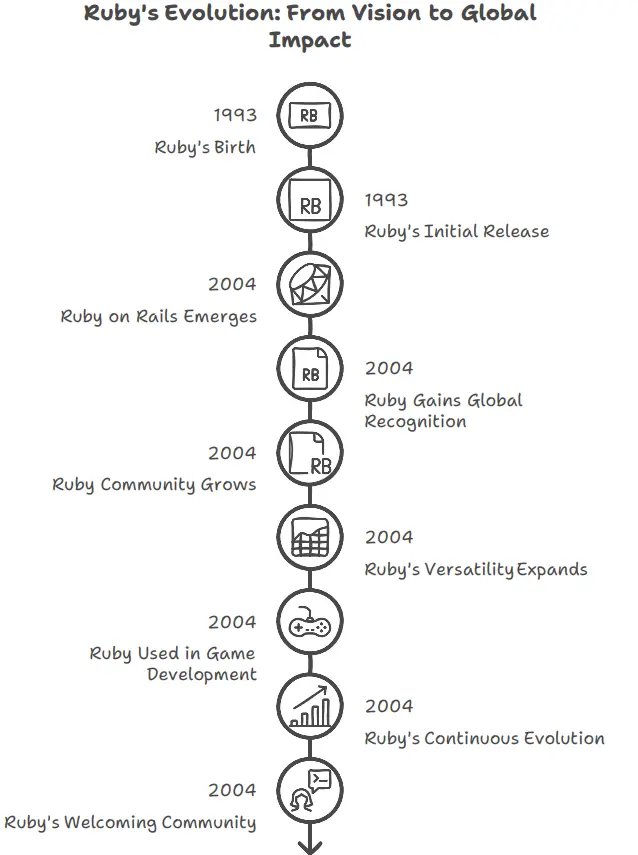
A Brief History of Ruby
Published on: 2024-08-09
Early Development and Initial Release
Ruby’s story begins in Japan in 1993 with Yukihiro “Matz” Matsumoto. Inspired by Smalltalk and Perl, Matz aimed to create a programming language prioritizing programmer happiness and productivity. The initial release in 1995, while not widely known outside Japan, laid the groundwork for what was to come. Key milestones included Ruby 1.0 (December 1996), Ruby 1.1 (August 1997), and the first stable version, Ruby 1.2 (December 1998). You can even find the early versions here.
The Rise with Ruby on Rails
However, it wasn’t until the emergence of Ruby on Rails in 2004 that Ruby truly gained global recognition. David Heinemeier Hansson, frustrated with the limitations of existing web development tools, created Rails, a framework that offered a rapid development environment, revolutionizing the way web applications were built.
The Expanding Ruby Ecosystem
The widespread adoption of Ruby on Rails ignited a surge of developers and enthusiasts in the Ruby community. Open-source libraries, known as “gems,” began flourishing, expanding Ruby’s capabilities and simplifying web development. Ruby’s versatility soon extended beyond web development, finding applications in data analysis, automation, scripting, and game development.
Ruby Today
Throughout its evolution, Ruby has consistently adapted to the changing technological landscape, receiving regular updates and new features. Its emphasis on readability, expressiveness, and a welcoming community has made it a beloved language for millions of developers worldwide.
Key Takeaways from Ruby’s History:
- Programmer Happiness First: Ruby was designed with the developer’s experience in mind, prioritizing readability, expressiveness, and joy in coding.
- Open Source Innovation: Ruby’s open-source nature fostered a thriving community and the creation of a vast ecosystem of tools and libraries.
- Versatility Beyond Web Development: Ruby has proven its adaptability in various domains, demonstrating its versatility and power.
- The Impact of a Visionary: Matz’s passion and dedication to creating a language that prioritized developer happiness have had a lasting impact on the tech world.


Ruby’s journey is a testament to the power of community, innovation, and a developer’s unwavering commitment to creating something beautiful and useful. It’s a language that continues to evolve and inspire, leaving an enduring mark on the world of software development.

